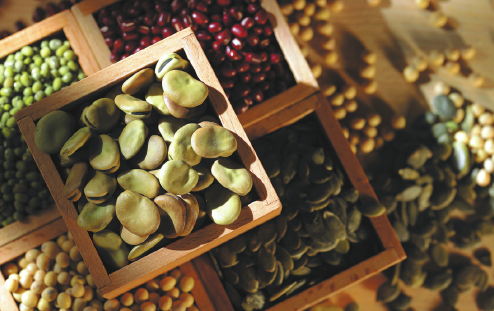The mighty broad bean


Traditional and fusion cooking styles, regional and international ingredients and a new awareness of healthy eating are all factors contributing to an exciting time for Chinese cuisine. Pauline D Loh explores the possibilities.
Every year, in the first week of October, my neighbors in Kunming sow their broad beans (Vicia faba). It is an easy date to remember, because it is the week of the national holidays.
The beans are left in the ground to winter, and when the cold snaps are finally over, the hardy beans push through the ground without waiting for the arrival of spring.
The beans take their time to grow, and by March they are bushlike, with heavy green foliage hiding the beautiful flowers with their deep purple, almost black, hearts. Then the plants devote their full energy to plumping up their pods.
From the middle of March right to the end of April, the pods are fat with beans and ready for harvest. The bushes keep on producing for about two months before they taper off and wilt. They are then ploughed back into the ground as green fertilizer.
The growing season in the north is about a month later and, in a good year, we can get beans right up until the end of May.
Broad beans are not native to China. They were brought here at least 2,000 years ago from the Tigris and Euphrates river valleys in modern-day Iraq. The old name for broad beans was hudou, the "beans from the Hu (Mesopotamia) people".
Their more modern name is candou, because a Ming Dynasty (1368-1644) botanist thought its fuzzy infant pods resembled silkworm cocoons.
The best way to eat fresh broad beans is to tip the whole lot, pods and all, into boiling salted water. Sometimes, a stick of cinnamon or a couple of star anise pods are dropped into the pot. After about 10 minutes, switch off the heat and leave the beans to steep for another half an hour.
The result is a fragrant platter of tender broad beans that can slowly be popped out of the pods, skinned and enjoyed.




































